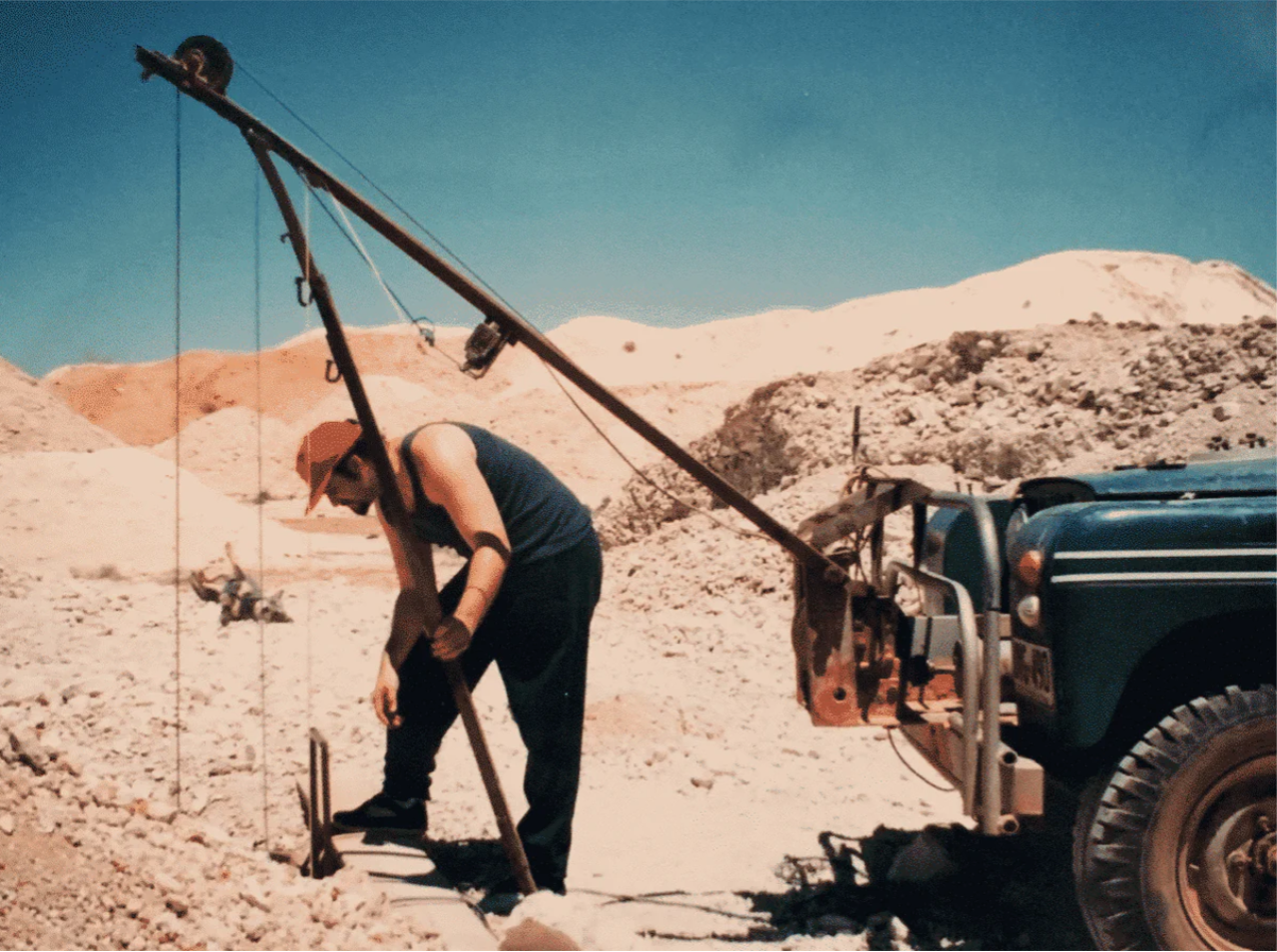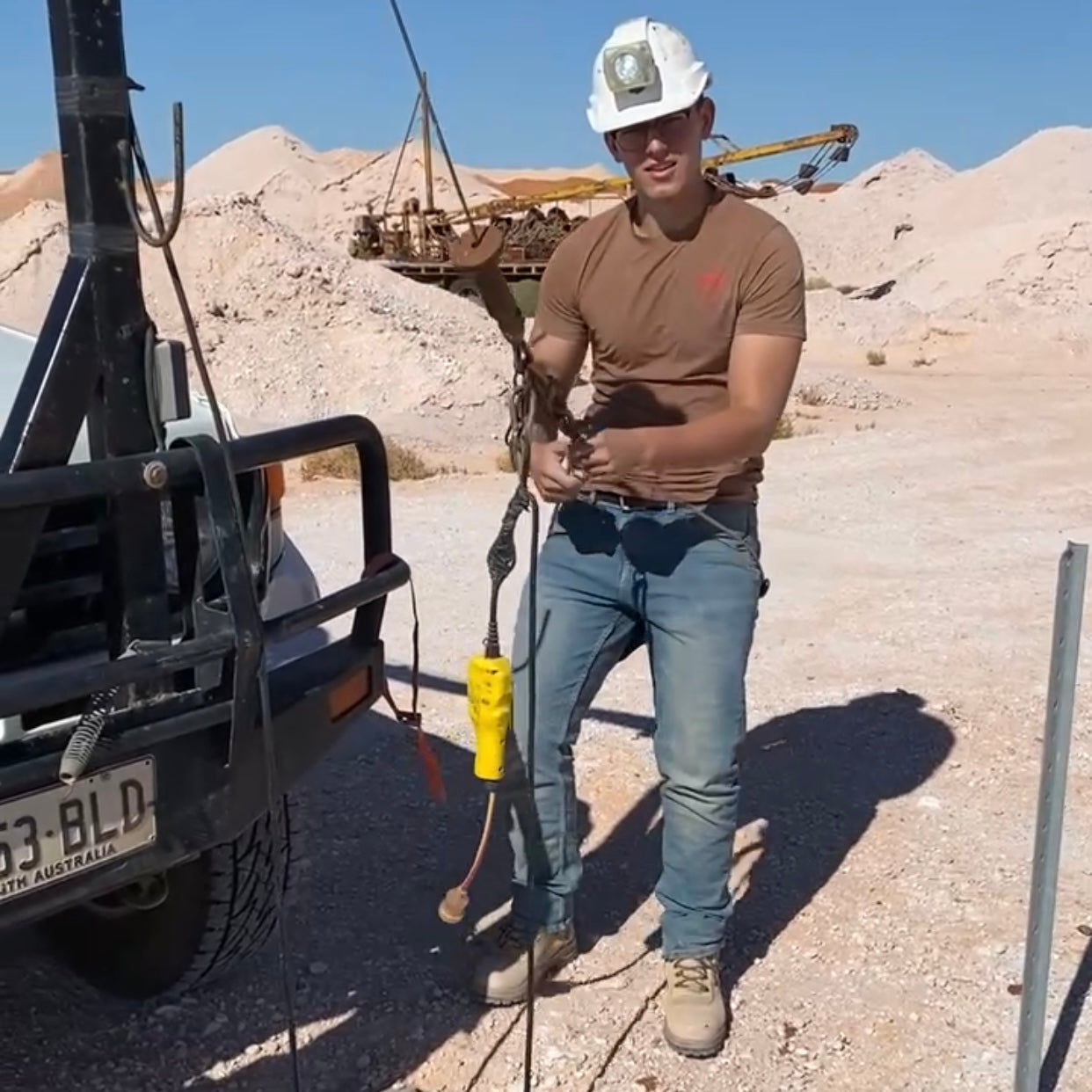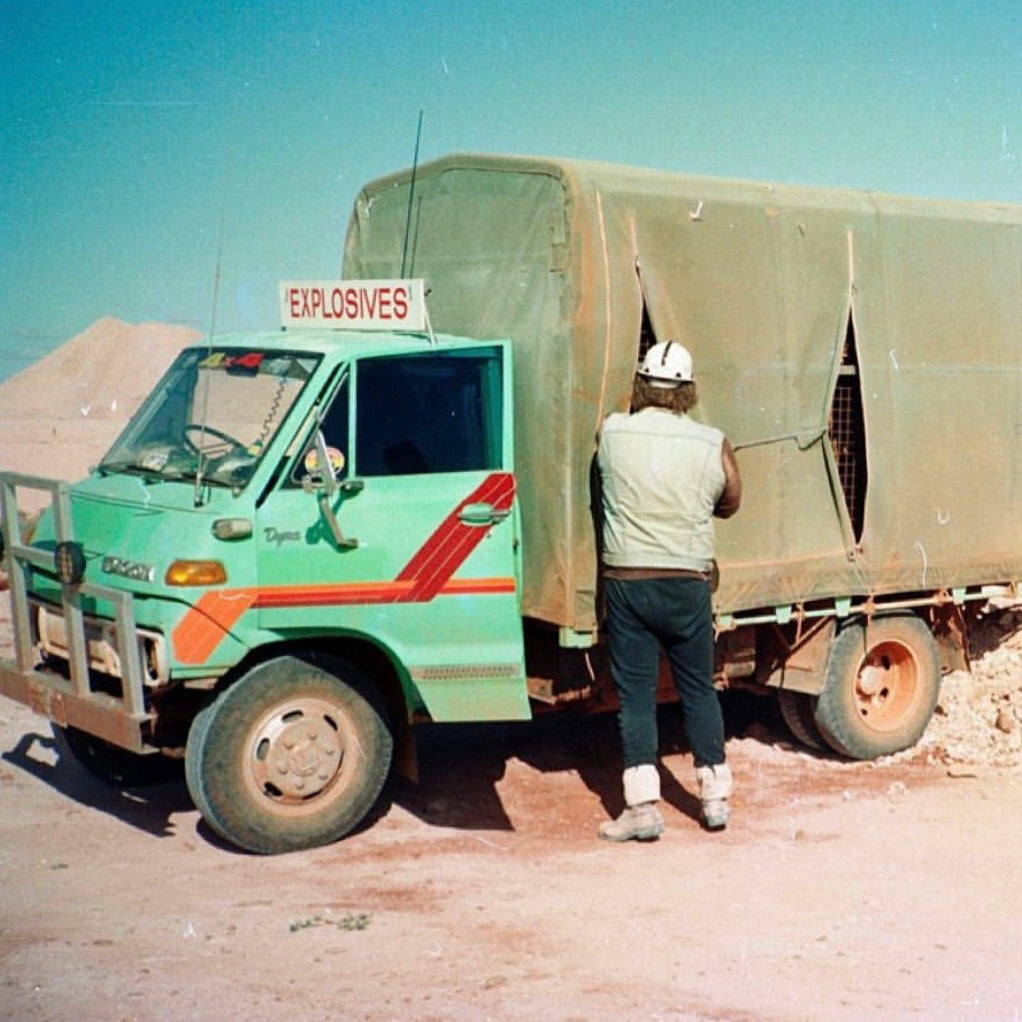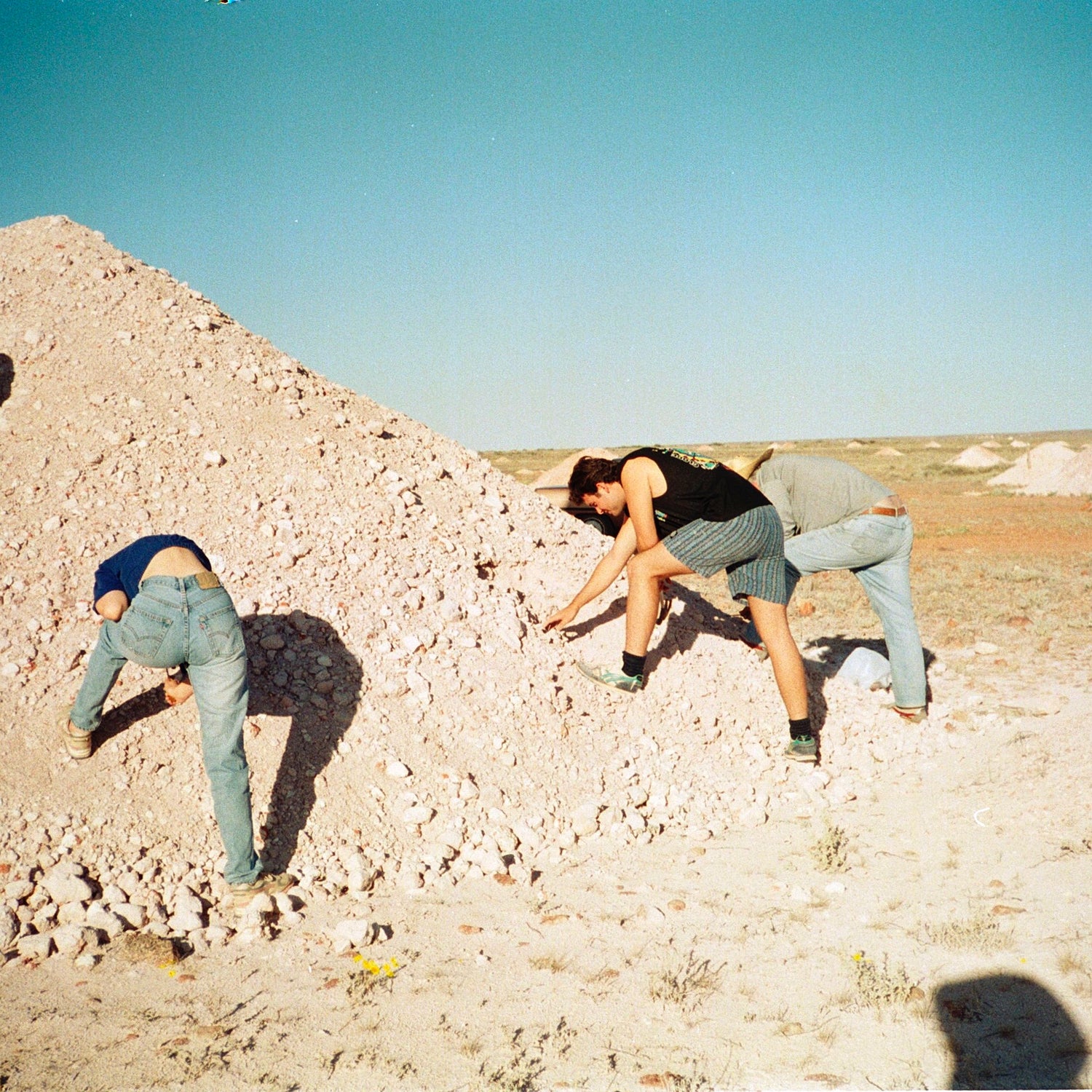
My Father in 1996
Here you can see my father looking down a shaft, leaning on a winch attached to the car; which miners will use to lower themselves down the hole.

Me Cutting Opals
Similar to mining, although certainly less dangerous; opal cutting is a treasure hunt. Slowly & carefully grinding away material in order to follow glimpses of colour. A good opal cutter can read a stone like a book, and reveal the full potential of colour, while attempting to maintain as much opal weight as possible.
About
Back in the 1970s, my cousins and Great Uncle embarked on the journey of opal mining, and by the 1980s, my Father joined them in the opal-rich Coober Pedy region. It was there that he delved into the intricacies of opal cutting and mining. Both my Brother and Brother-in-law also ventured into opal mining, collectively igniting my passion for continuing our family operation.
Motivated by this treasure-hunting family tradition, I decided to extend the magic of Australian opals to a broader audience. My heritage rooting from my Mother's Czech and French ancestry became a valuable asset in forging connections across Europe. These connections not only opened doors, but also enabled the cultivation of lasting relationships.
Within the VELROK collection, you'll discover opals sourced from my Brothers and trusted family friends, with each stone personally selected and transformed from its rough stage to a polished gemstone by me.
As our journey unfolds, we consistently expand our opal collection based on what we unearth in the mines. This ensures we offer a constantly evolving range of these magnificent gemstones. We invite you to join us on this opal expedition and exploration of our collection.

Rough Opal
Opal is formed by silica rich water seeping through the ground and settling into a cavity or pocket. As the water evaporates it leaves a higher concentrate of silica in the remaining water, eventually, solidifying into opal.
The magical colour in opal is created by the stacked hydrated silica spheres that diffract light which enters the stone & exits as different colours.

Going Down a Shaft
Shafts are essentially vertical tunnels that enable miners to reach certain "levels" & opal bearing grounds up to 30 metres deep.
Miners use a ladder or winch mounted on the front or back of a car, as I am in the image, to descend into the shaft.

Explosives
Explosives are used to blow out a large section of sandstone to reveal a new section or wall face to access opal that may otherwise be hidden. The explosive used is a mixture of nitro fertiliser held together by a cardboard tube & news paper. The rising costs of these explosives have made them a less popular option today.

Noodling Mullock Heaps
These heaps/piles of sandstone are a result of the tunnelling miners that need to suck out the dirt and pile it up on the surface out of the way from the underground workings. As opal mining is essentially done with the naked eye, a lot of opal can be missed by the miners and end up on these heaps.
Noodling is simply fossicking for any opals that may have ended up here. Tourists have found opals worth thousands of dollars but BEWARE... next to each heap is a hole that may not be visible and if stepped on, could be fatal.
Featured collection
-
 Sold out
Sold out6.00ct Dark Opal (A1)
Regular price $900.00 AUDRegular priceUnit price / per -
 Sold out
Sold out8.90ct Dark Opal (A15)
Regular price $5,000.00 AUDRegular priceUnit price / per -
 Sold out
Sold out(Sold) Custom Calibrated Order
Regular price $2,060.00 AUDRegular priceUnit price / per -
 Sold out
Sold out2.15ct Dark Opal (A7)
Regular price $305.00 AUDRegular priceUnit price / per




